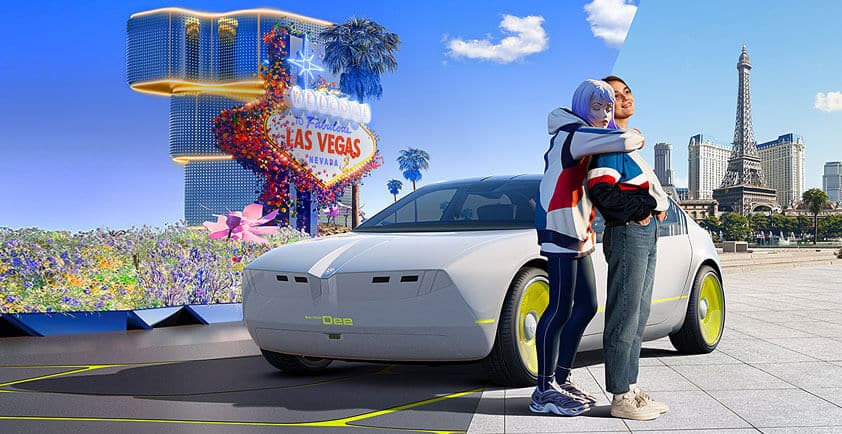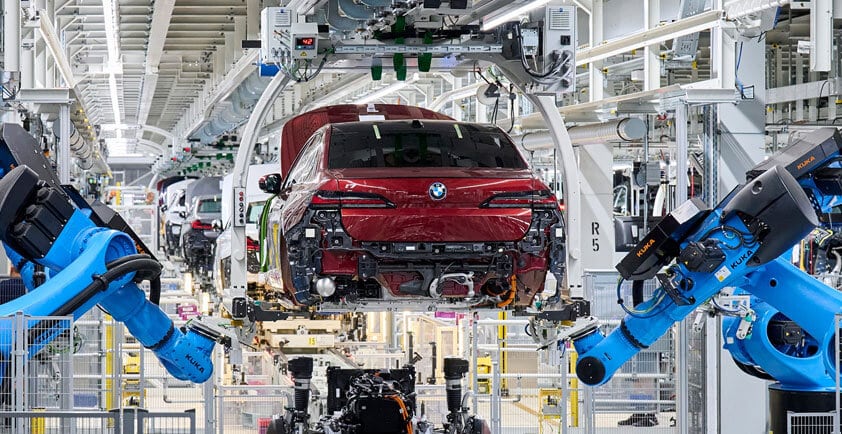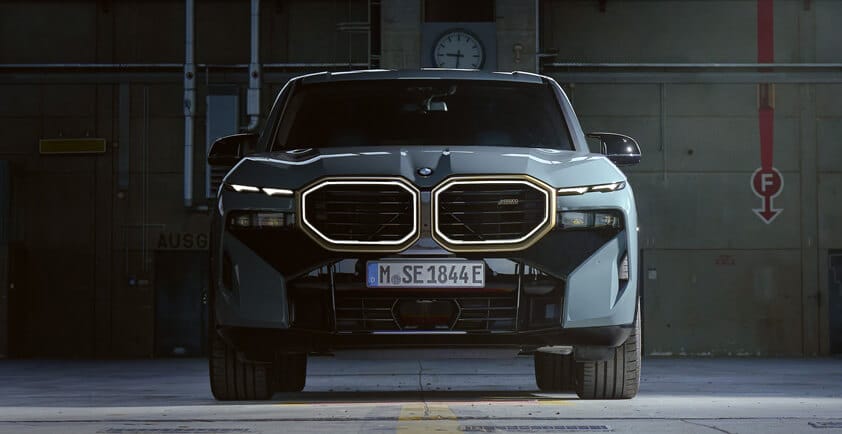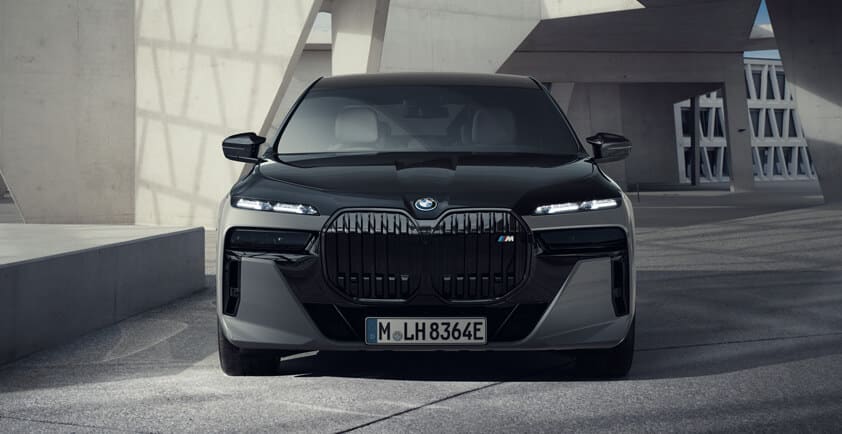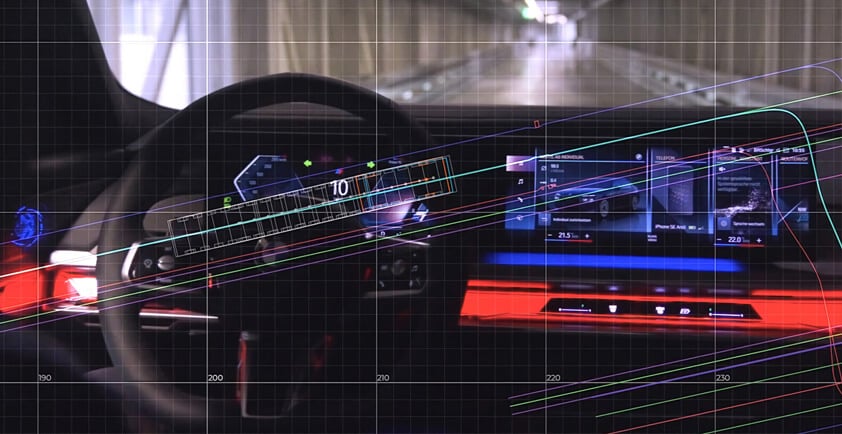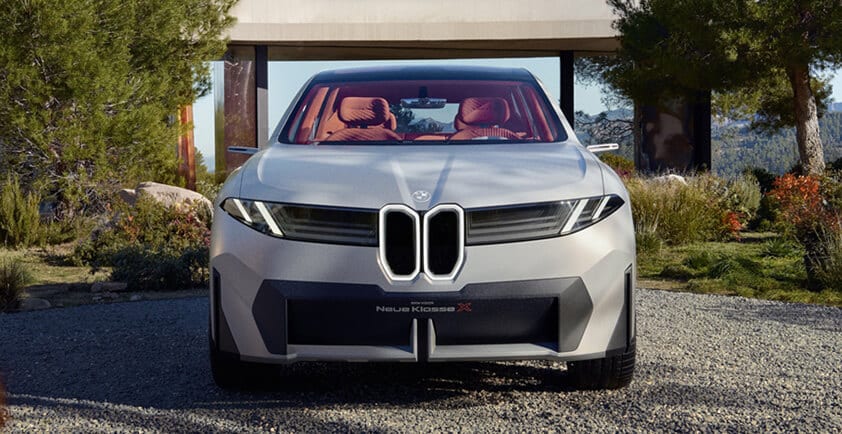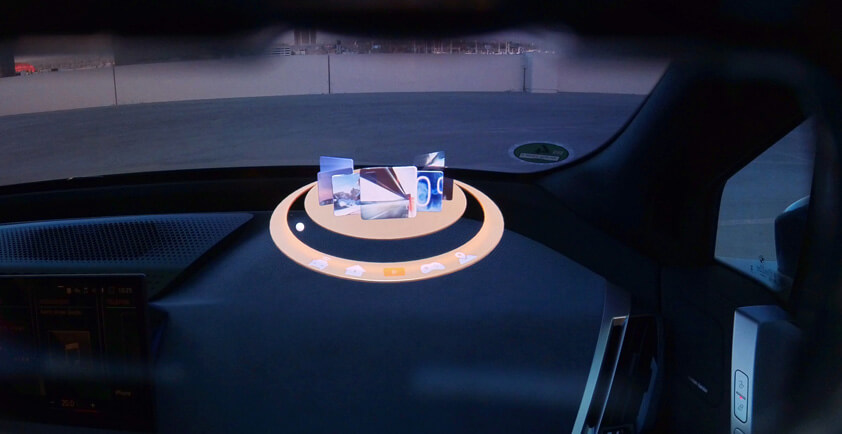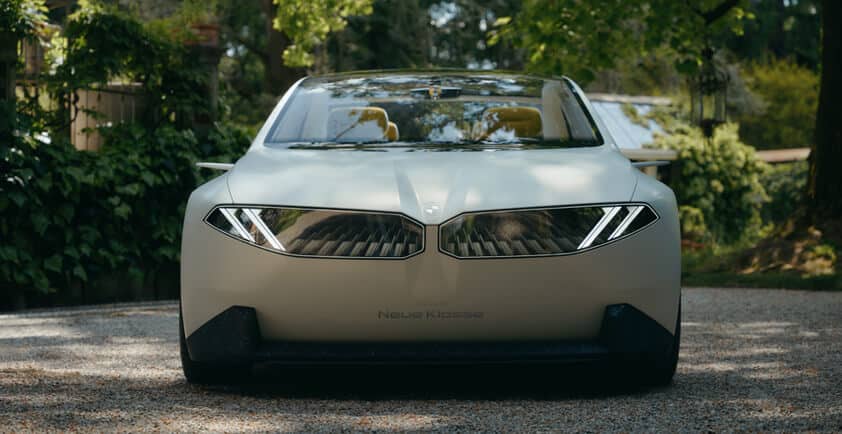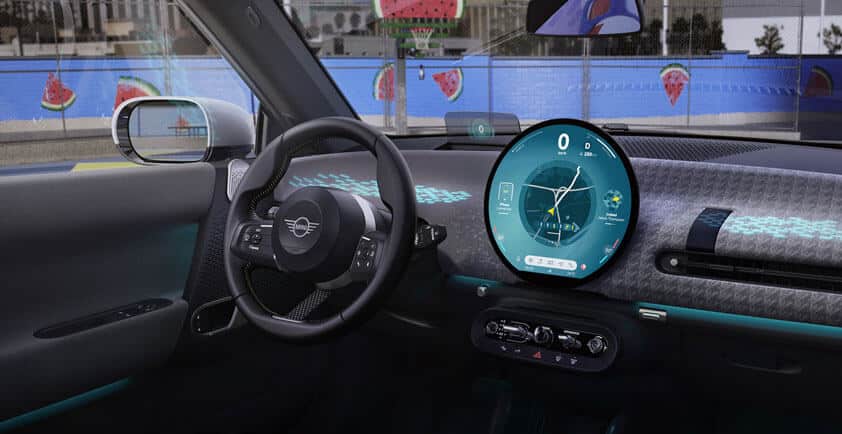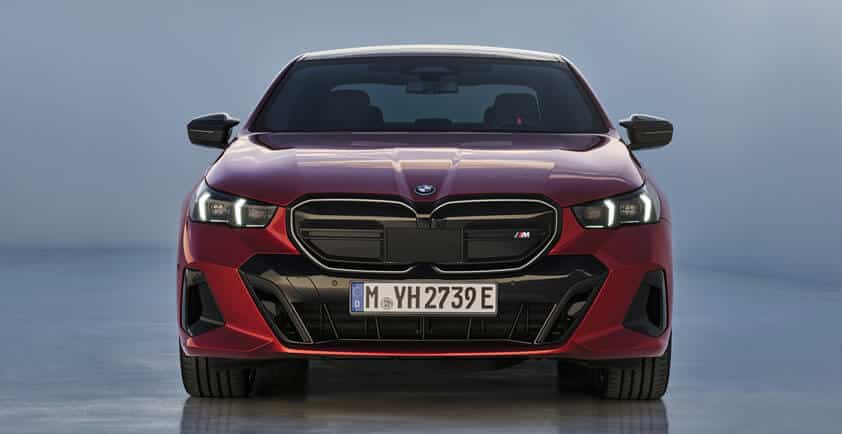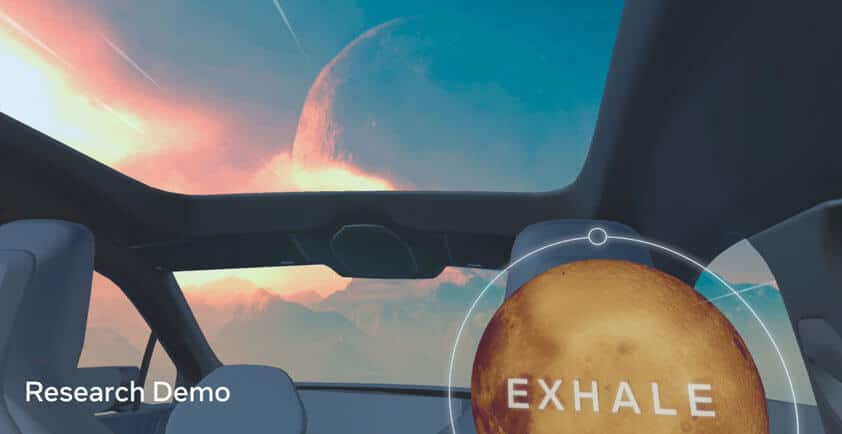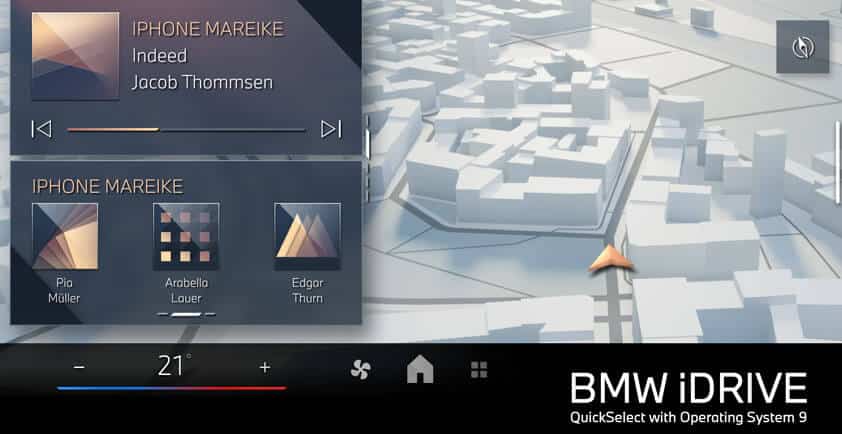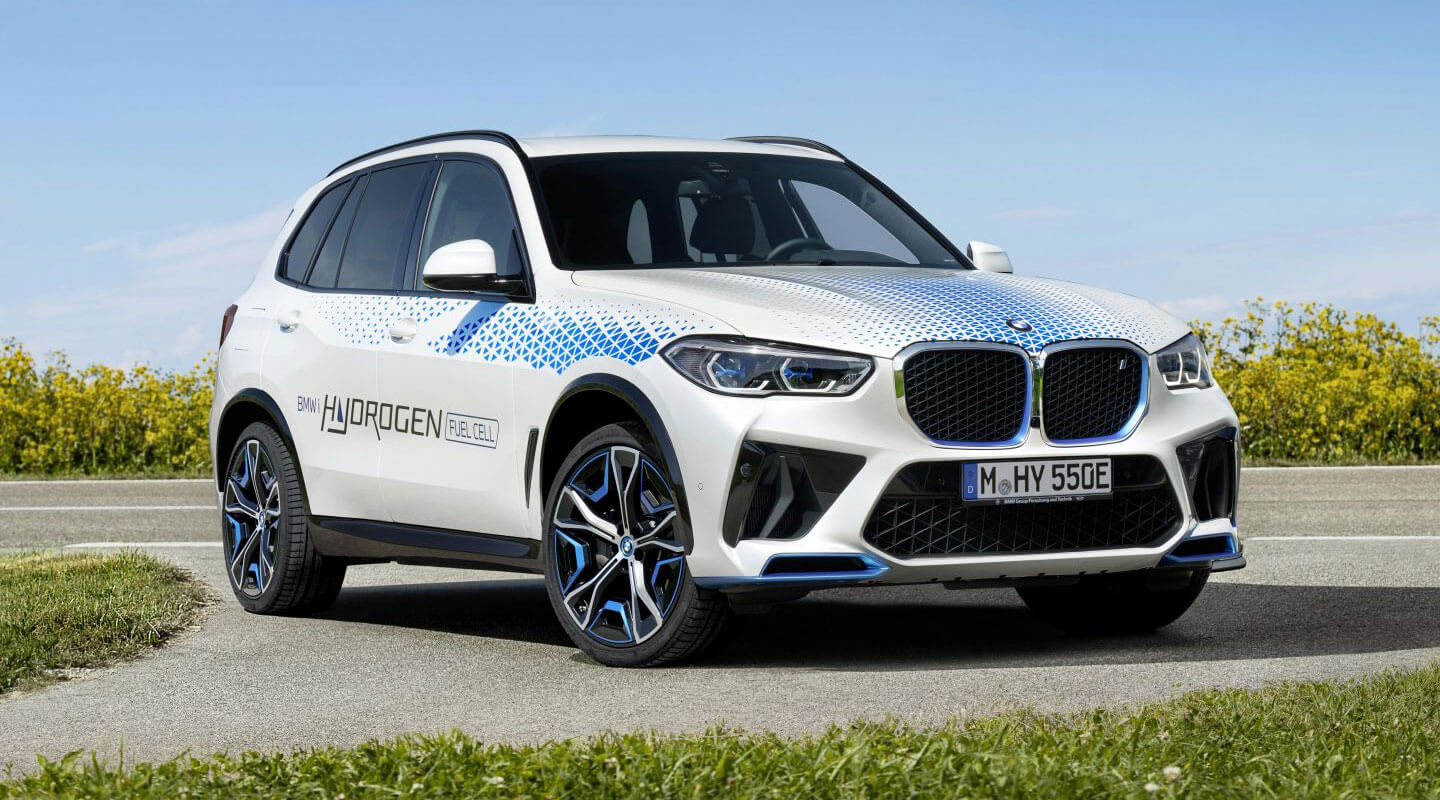
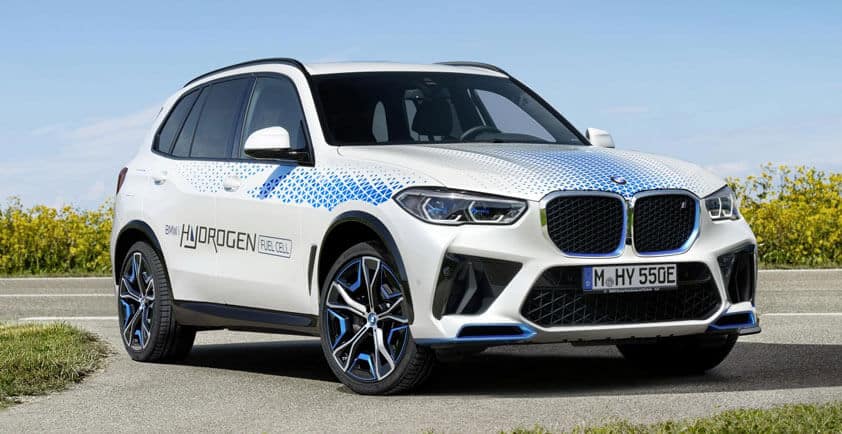
BMW GROUP BRINGS HYDROGEN CARS TO THE ROAD: BMW iX5 HYDROGEN PILOT FLEET LAUNCHES.
>> Important next phase: pilot vehicles in real-world use deliver valuable knowledge
>> Paving the way for potential series production
Munich / Antwerp. The BMW Group is presenting international media representatives with the first vehicles in a pilot fleet that will go into service this year. After four years of development work, the BMW iX5 Hydrogen vehicle and development project is entering its critical next phase.
The fleet of under 100 vehicles will then be employed internationally for demonstration and trial purposes for various target groups. This active driving experience will therefore be the first chance for people not involved in the development process to gain a direct impression of what the BMW iX5 Hydrogen has to offer.
"Hydrogen is a versatile energy source that has a key role to play in the energy transition process and therefore in climate protection. After all, it is one of the most efficient ways of storing and transporting renewable energies", said Oliver Zipse, Chairman of the Board of Management of BMW AG. "We should use this potential to also accelerate the transformation of the mobility sector. Hydrogen is the missing piece in the jigsaw when it comes to emission-free mobility. One technology on its own will not be enough to enable climate-neutral mobility worldwide."
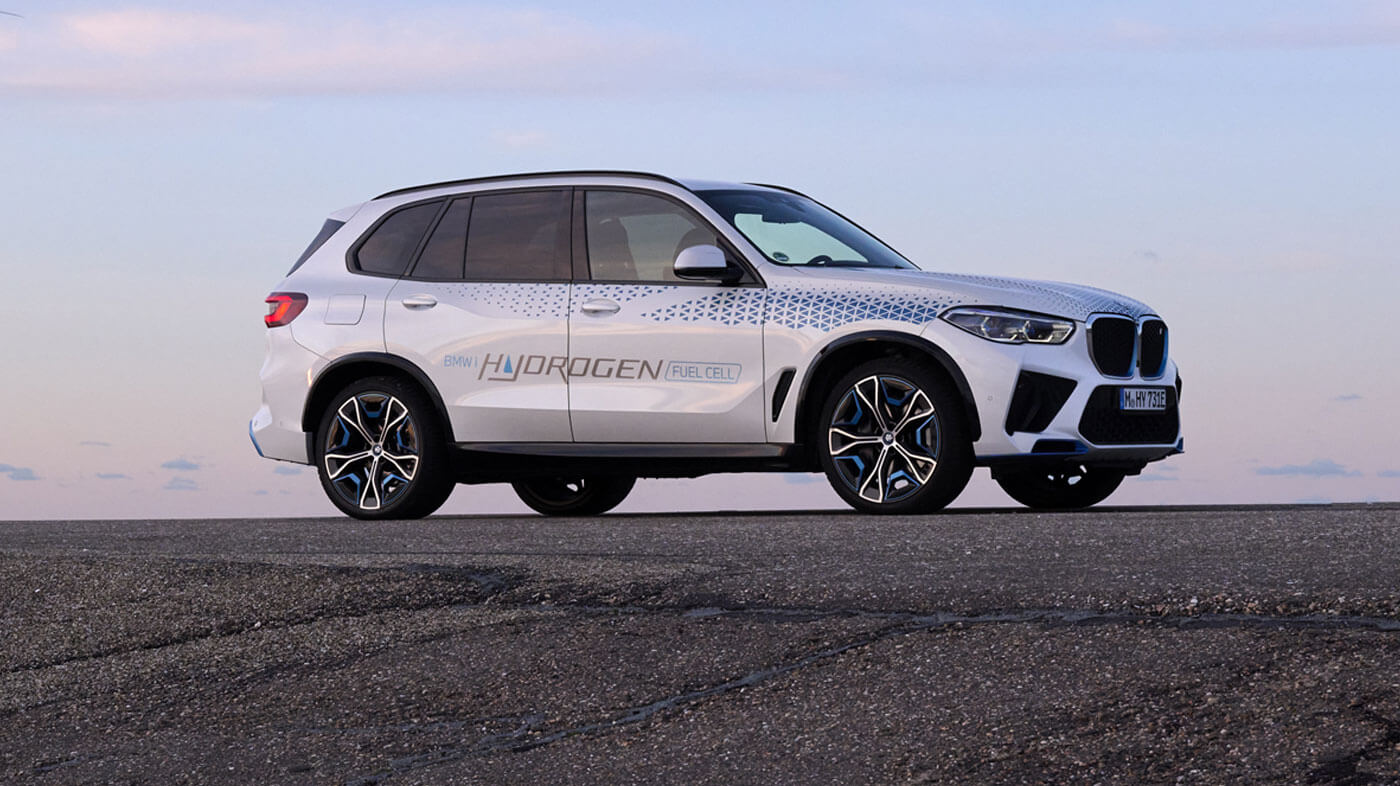
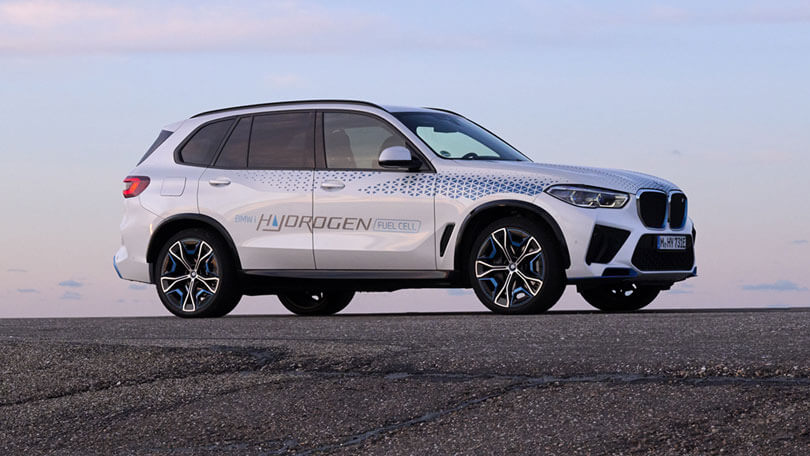
The BMW iX5 Hydrogen.
The BMW iX5 Hydrogen developed on the basis of the current BMW X5 was first unveiled as a concept at the IAA show in 2019. Initial prototypes were then made available at the IAA Mobility 2021 for visitors to experience in action as shuttle vehicles.
Its hydrogen fuel cell system is further proof of the BMW Group’s leading development expertise in the field of electric drive technologies. The BMW Group is systematically pushing forward with development of hydrogen fuel cell technology as an additional option for locally emission-free individual mobility in the future.
BMW’s technological expertise.
The BMW Group produces the highly efficient fuel cell systems for the pilot fleet at its in-house competence centre for hydrogen in Munich. This technology is one of the core elements in the BMW iX5 Hydrogen and generates a high continuous output of 125 kW/170 hp.
A chemical reaction takes place in the fuel cell between gaseous hydrogen from the tanks and oxygen from the air. Maintaining a steady supply of both elements to the fuel cell’s membrane is of crucial importance for the drive system’s efficiency. In addition to the technological equivalents of features found on combustion engines, such as charge air coolers, air filters, control units and sensors, the BMW Group also developed special hydrogen components for its new fuel cell system. These include the high-speed compressor with turbine and high-voltage coolant pump, for instance.
The BMW Group sources the individual fuel cells from the Toyota Motor Corporation. The two companies have enjoyed a partnership characterised by trust for many years and have been collaborating on fuel cell drive systems since 2013.
Fuel cell systems are manufactured in two main steps, based on the individual fuel cells. The cells are first assembled into a fuel cell stack. The next step involves fitting all the other components to produce a complete fuel cell system.
Stacking of the fuel cells is largely a fully automated process. Once the individual components have been inspected for any damage, the stack is compressed by machine with a force of five tonnes and placed in a housing. The stack housing is manufactured in the light metal foundry at BMW Group Plant Landshut using a sand casting technique.
For this, molten aluminium is poured into a mould made from compacted sand mixed with resin in a process specially designed for this small-series vehicle.
The pressure plate, which delivers hydrogen and oxygen to the fuel cell stack, is made from cast plastic parts and light-alloy castings, also from the Landshut plant. The pressure plate forms a gas-tight and water-tight seal around the stack housing.
Final assembly of the fuel cell stacks includes a voltage test along with extensive testing of the chemical reaction within the cells. Finally, all the different components are fitted together in the assembly area to produce the complete system.
During this system assembly stage, further components are fitted, such as the compressor, the anode and cathode of the fuel-cell system, the high-voltage coolant pump and the wiring harness.
In combination with a highly integrated drive unit using fifth-generation BMW eDrive technology (the electric motor, transmission and power electronics are grouped together in a compact housing) at the rear axle and a power battery with lithium-ion technology developed specially for this vehicle, the powertrain channels maximum output of 295kW / 401 hp onto the road. In coasting overrun and braking phases, the motor also serves as a generator, feeding energy back into a power battery.
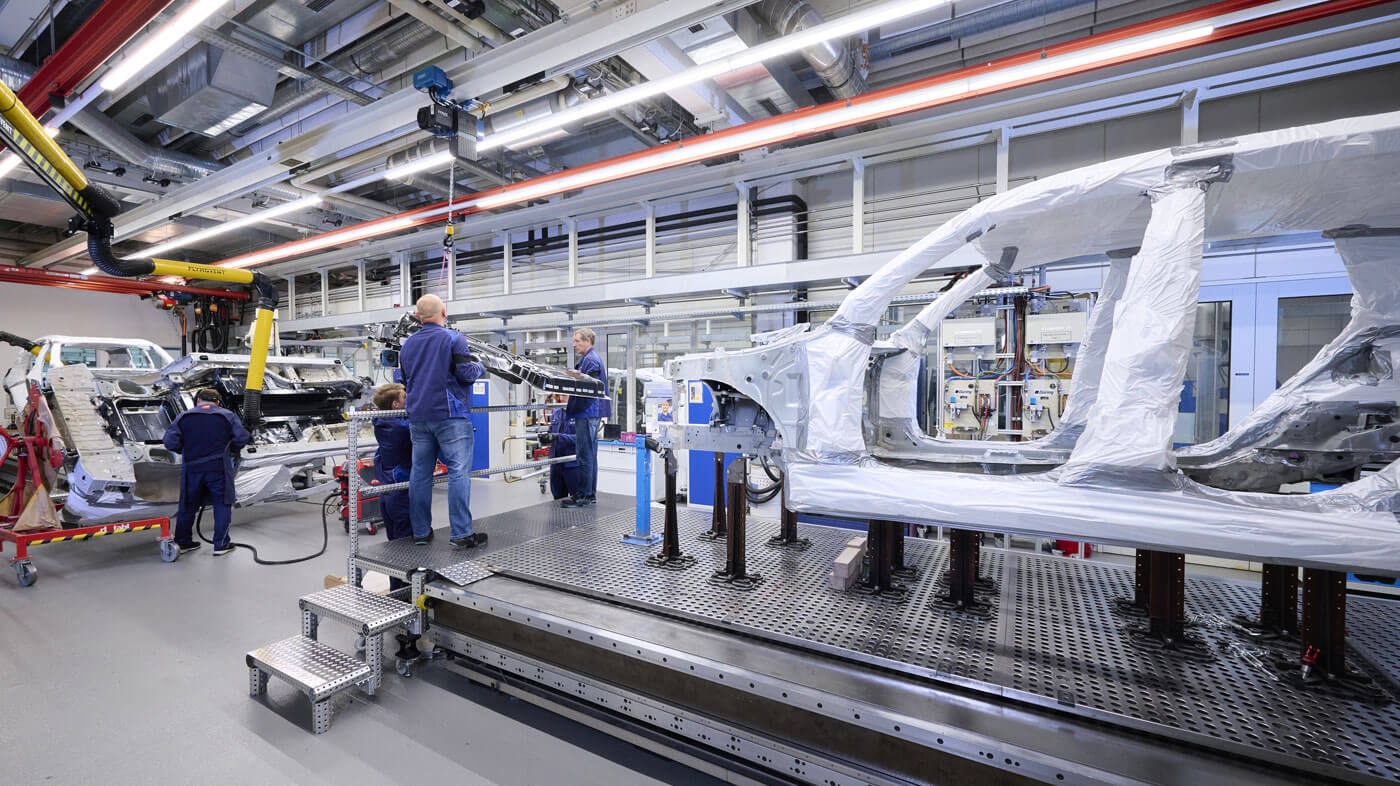
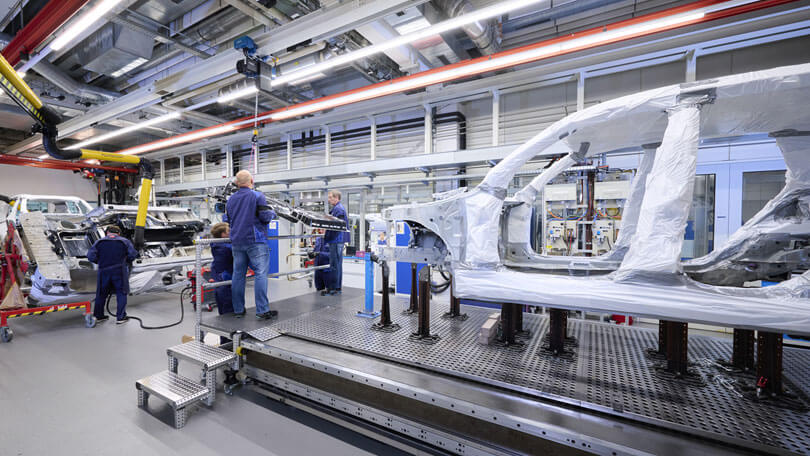
Production at Munich pilot plant.
The BMW iX5 Hydrogen is being built in the BMW Group’s pilot plant at its Research and Innovation Centre (FIZ) in Munich. This is the interface between development and production where every new model from the company’s brands is made for the first time. Around 900 people work there in the body shop, assembly, model engineering, concept vehicle construction and additive manufacturing.
They are tasked with ensuring that both the product and the manufacturing process are ready for series production. In the case of the BMW iX5 Hydrogen, specialists in hydrogen technology, vehicle development and initial assembly of new models have been working closely together to integrate the cutting-edge drive and energy storage technology.
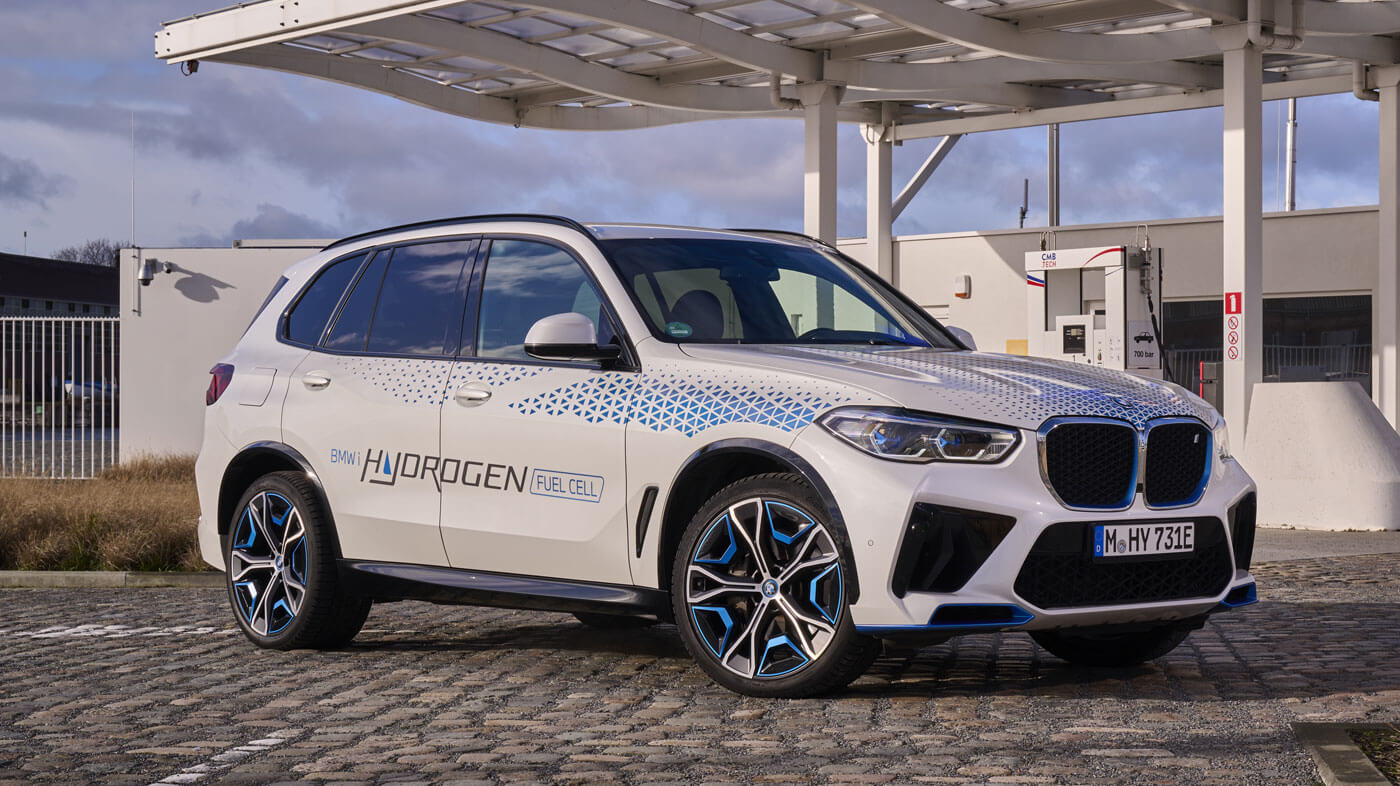
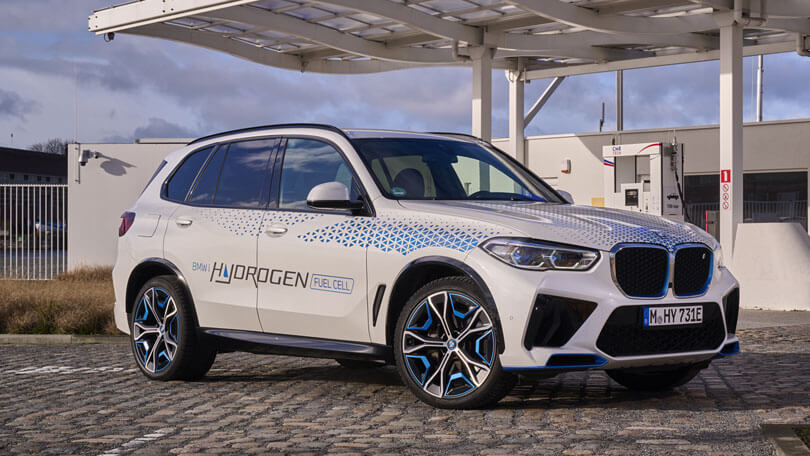
Hydrogen allows rapid re-fuelling.
The hydrogen needed to supply the fuel cell is stored in two 700-bar tanks made of carbon-fibre reinforced plastic (CFRP). Together these hold almost six kilograms of hydrogen, enough to give the BMW iX5 Hydrogen a range of 504 km (313 miles) in the WLTP cycle. Filling up the hydrogen tanks only takes three to four minutes – so the BMW iX5 Hydrogen can also provide the driving pleasure for which BMW is renowned over long distances, with just a few, short stops along the way.
FCEV technology contributes to decarbonisation.
The BMW Group is the first German carmaker to have joined the "Business Ambition for 1.5°C campaign" led by the Science Based Targets initiative and is committed to achieving the goal of full climate neutrality throughout the value chain.
The next step in this process involves the BMW Group’s plan to reduce CO2 emissions per vehicle over its full lifecycle – i.e. supply chain, production and use phase – by at least 40 per cent by 2030 compared with 2019.
The BMW Group sold more than 215,000 fully electric vehicles worldwide in 2022, which represents an increase over the previous year of almost 108 per cent. Fully electric vehicles accounted for just under 9 per cent of total sales volumes last year, and this share is set to increase to 15 per cent in 2023.
By 2030 at the latest, the BMW Group is looking to reach a situation where fully electric vehicles claim a more than 50 per cent share of its overall sales.
The BMW Group views FCEV technology expressly as a potential addition to the drive technology used by battery-electric vehicles.
Hydrogen as part of global activities for CO2-free mobility.
According to a report by the International Energy Agency (IEA), hydrogen offers considerable potential as a future energy source in connection with global energy transition activities. Thanks to its storage and transport capabilities, hydrogen can be used for a wide variety of applications.
Most industrialised countries are therefore adopting hydrogen strategies and backing them up with roadmaps and concrete projects. In the transport sector, hydrogen can become a further technology option, alongside battery-electric mobility, for shaping sustainable individual mobility in the long term.
However, this will depend on competitive production of sufficient quantities of hydrogen from green power, as well as expansion of the corresponding filling infrastructure, which is already being intensively pursued in many countries.
The BMW Group welcomes and supports activities to promote innovation in Germany and Europe that will help build a hydrogen economy and accelerate production of green hydrogen. These specifically include the large-scale hydrogen projects classified as Important Projects of Common European Interest (IPCEI).
The projects that comprise this European Union initiative, supported in Germany by the Federal Ministry of Economic Affairs and the Federal Ministry of Transport, span the entire value chain – from hydrogen production to transport to applications in industry.
With the right conditions, hydrogen fuel cell technology has the potential to become a further pillar in the BMW Group’s drive train portfolio for local CO2-free mobility.
